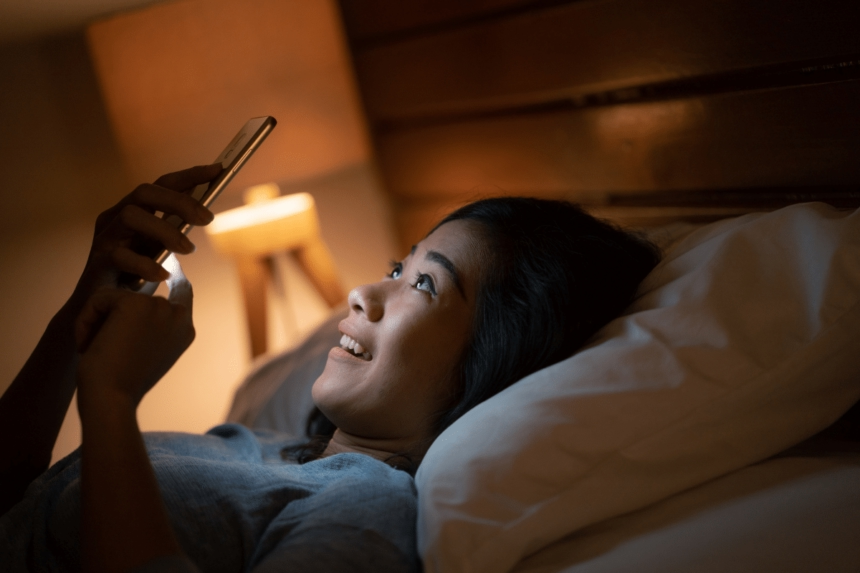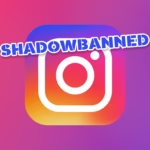Why does a “quick scroll” on TikTok turn into 40 minutes, while Instagram feels easier to put down? The short answer: TikTok’s mix of short video, interest-first recommendations, and a single, infinite feed lines up with how the brain responds to surprise and quick rewards.
Both apps use algorithms, but TikTok’s design leans hard into fast feedback and nonstop novelty, which raises the urge to swipe again.
As of October 2025, both platforms compete for attention with short videos. Instagram has Reels and stronger recommendations than in the past. Still, TikTok tends to keep people in the loop longer. This explainer covers four parts: the brain science powering sticky short videos, TikTok’s design choices that amplify engagement, how Instagram differs even with Reels, and simple ways to regain control without fear tactics.
This guide uses plain language. Key terms are defined in context, and the focus stays on what users actually experience. The goal is to make the science behind TikTok’s pull clear, then offer practical steps anyone can try today.
The brain science behind why short video grabs attention
Short video does not just entertain, it fits how the brain reacts to rewards and novelty. In social apps, the brain searches for useful, funny, or interesting bits. When a format offers rapid chances for a reward, the habit can strengthen fast.
Three ideas explain this well. First, variable rewards, where each swipe could be great or dull, keep anticipation high. Second, novelty, or fresh and unexpected content, refreshes attention. Third, fast feedback, like instant auto-play and short clips, closes the loop quickly. Together, these parts can form a quick habit cycle: seek, swipe, reward, repeat.
Dopamine 101 and variable rewards: why surprise keeps the brain hooked
Dopamine is a chemical that helps signal rewards in the brain. It plays a role in learning what to seek out next. Variable rewards are a pattern where the next outcome is uncertain. Think of a bag of mixed candy, each piece could be a favourite or a dud. That uncertainty can heighten interest.
TikTok’s feed mirrors this pattern. Each swipe brings a new clip, often from a wide pool of creators and topics. Some videos hit right away, some miss, and some surprise with a laugh, a new tip, or a catchy sound. Personalized picks raise the odds of a good hit, which can make the next swipe feel promising. Over time, the brain links swiping with the chance of a reward, and the loop strengthens.
Flow state and time blindness in swipe-first feeds
Flow is a state of deep focus with easy actions and clear feedback. Time often feels shorter in this state. Short video supports flow with a simple loop: watch, swipe, repeat. There is low friction, no typing needed, and feedback is instant. A clip ends quickly and invites the next action. There are a few natural stopping points, so it is easy to keep going.
When sliding into flow, small decisions fade. The action is so easy that attention stays locked. Minutes pass without notice. On TikTok, this pattern is common because the app reduces effort and keeps signals clear. The brain slips into a rhythm that feels smooth, even when the intention was to watch only a few clips.
Attention magnets: sound hooks, jump cuts, captions, and novelty
TikTok’s style pulls attention fast. Loud hooks in the first seconds, bold captions, quick cuts, and on-screen text are common. These cues help the brain decide to keep watching before a thought forms. The result is rapid engagement.
Novelty plays a key role. Sound trends and formats evolve, and creators remix ideas into something new. Frequent novelty refreshes attention and reduces boredom. When boredom stays low, stopping gets harder. Even short pauses, like a quiet card or a slower intro, are less common. The energy stays high, which fuels more swipes.
Personalized relevance raises the urge to keep going
Personalization means the feed learns what a viewer watches, replays, or skips, then serves more of it. Signals include pause time, replays, shares, and quick skips. Over time, the system learns small preferences, like topics, creator styles, or sound types.
As relevance rises, the chance of a rewarding next swipe goes up. This supports the variable reward loop. If the last video was good, the next one might be too. The brain starts to expect another hit, so the desire to swipe again grows. Small improvements in relevance can have a big effect on session length.
TikTok design choices that boost stickiness compared to Instagram
While Instagram now promotes short videos, TikTok’s core design centers on a single, interest-first feed. This structure changes how long people stay and how often they come back. Product mechanics support the brain patterns described above.
For You Page and the interest graph beat a pure follower feed
An interest graph is a map of what a user likes, not just who they know. TikTok’s For You Page is built on this idea. It pulls from a massive pool of creators and topics, then ranks content for each person. The odds of finding a hit clip rise because the pool is so large.
Instagram’s history centers on a social graph, which is who someone follows or knows. The app has added more recommendations and Reels. Even so, TikTok starts with interests by default, which widens discovery. A wider pool plus strong personalization means the feed keeps finding new reasons to stay.
Infinite scroll and auto-play remove stopping cues
Stopping cues are small breaks that prompt a pause or exit. TikTok removes many of these. The feed is infinite, swipes are effortless, and auto-play starts the next clip instantly. There is almost no friction.
When apps reduce pauses, users face fewer natural points to stop. Fewer breaks can lengthen sessions. Simple mechanics, like auto-play and no page breaks, shift control from deliberate choice to the path of least effort.
Short clips, fast signals, and quick retries train the loop
TikTok clips are usually short, often under a minute. Short length speeds up learning for both the viewer and the algorithm. The viewer gets fast feedback on what feels worth watching. The system gathers quick signals on completion rate, replays, and skips, then adjusts.
Quick retries mean the app can test many videos in one session. More tests improve future picks. Better picks raise engagement. The loop tightens: fast signals, better predictions, longer sessions.
Trends, sounds, and templates make content supply endless
TikTok helps creators produce more with less effort. Sounds, templates, green screen tools, and simple edits lower the bar to make a video. Trend formats spread fast and encourage remixing. The result is a constant flow of new content.
Endless supply increases variety. Variety supports variable rewards and keeps boredom low. This makes the feed feel fresh, even during long sessions, because new twists keep showing up.
How Instagram differs, even with Reels trying to catch up
Instagram has moved closer to short video with Reels and more recommendations. Even so, its roots shape a different pace. The experience often spreads across posts, Stories, Reels, and DMs, which introduces natural breaks. These breaks matter for session length.
Social graph first vs interest graph first
Instagram still leans toward who someone knows. It mixes in suggested posts and Reels, but the social layer is strong. This can feel more predictable. For some users, predictability makes it easier to stop, because fewer clips truly surprise.
TikTok, on the other hand, centers on interests right from the start. The first screen is a personalized For You feed. With such a wide range of content, the chance of hitting a hidden interest is higher, which keeps the loop rolling.
Reels look similar but serve different goals.s
Reels adds a short video to Instagram, but it is one of several tabs. Users also check Stories, feed posts, and messages. Switching tabs creates small pauses. Those pauses act as gentle stopping cues.
Instagram balances social updates with entertainment. Some sessions are about friends and family. Others are about discovery. This mix can reduce endless discovery for some people, because social goals compete with entertainment goals.
What the algorithms reward: watch time vs social feedback
Both apps track watch time, but the weight of signals differs. TikTok is highly tuned to quick, direct signals from the video itself, like completion rate, replays, and skips. These signals help the system lock onto pure engagement fast.
Instagram still weighs social signals, like likes, comments, and relationships. Social context influences what gets shown. This can keep the feed closer to known circles, which may lead to more predictable outcomes and, for some, shorter sessions.
Stopping cues matter: tabs, story bars, and task switching
Design shapes decisions. Instagram has more built-in pauses, like finishing a set of Stories, or reaching the end of a reel tray before jumping to another part of the app. Task switching, even a small one, often prompts a rethink. That moment helps some users decide to stop.
TikTok’s single endless feed, paired with auto-play and short clips, reduces these pauses. With fewer chances to step back, it is easier to keep going.
Who is most at risk, and simple ways to take control
Short videos can be fun and helpful, but balance matters. Teens and young adults may feel the pull moreLate-nightht scrolling can chip away at sleep. Simple guardrails make a real difference without ditching the apps altogether.
Why teens and young adults may feel the pull more
Developing brains seek novelty and social signals. TikTok offers both fast and often. Quick clips ease boredom and stress in the moment. The risk is that late-night sessions stack up, and sleep takes the hit. That loss can affect mood, focus, and school or work.
Clear boundaries help. Setting hours, using timers, and planning times to scroll can keep things in check. The goal is not zero use; it is controlled use.
Built-in tools that help: screen time limits and reminders
Simple tools work well when used together:
- Set daily limits inside the app. Pick a number that matches goals, then adjust.
- Turn on break reminders every 10 to 20 minutes. Use them as a cue to stand up or stop.
- Schedule quiet hours at night. Try a bedtime mode that mutes notifications.
- Use the phone’s screen time dashboard to set app timers. Pair it with a lockscreen that nudges a pause.
- Try restricted mode late at night. Fewer intense clips can make stopping easier.
These steps add friction at the right times, especially after 9 p.m.
Make the feed calmer on purpose
Small feed tweaks change the experience:
- Switch to a Following or Friends feed when available. Familiar content often feels calmer.
- Mark topics as Not Interested that hijack attention. The feed will adjust.
- Search with a goal, like one recipe or one workout. Then stop on purpose.
- Turn off autoplay if the app allows it. If not, set a timer and watch in short batches.
Fewer triggers mean fewer urges to keep swiping.
Tiny habits that work in real life
Habits beat willpower. Try one or two of these:
- Move the app off the home dock. Add one extra swipe before opening it.
- Turn the phone to grayscale at night. Less colour, fewer cues to keep watching.
- Set Focus modes during school or work. Hide social apps for a set block.
- Charge the phone outside the bedroom. Use a cheap alarm clock instead.
- Put a sticky note on the phone: “What is the goal?” This tiny pause helps.
These changes cut mindless use without banning the app.
Conclusion
TikTok’s pull comes from a tight fit between short video, an interest-first feed, and infinite scroll. The brain responds to variable rewards and quick feedback, and TikTok’s design amplifies both. Instagram can feel sticky too, but its social roots and multi-tab setup add more natural breaks for many people.
Short videos can be both fun and useful when kept in balance. Try one small step today, like a 20-minute timer or a daily limit, and notice how your mood and sleep change over a week. The goal is control, not perfection. A few guardrails can turn endless scrolling into intentional watching.















